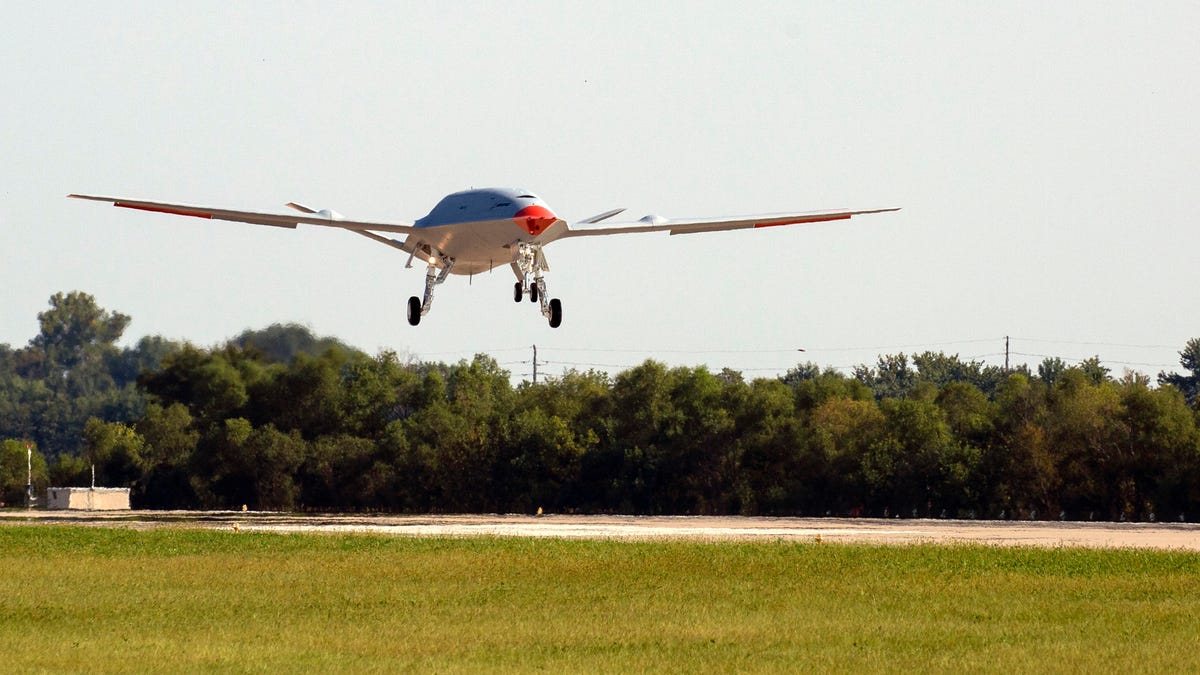Boeing tests drone with aerial refueling in mind
The Navy wants unmanned aircraft to fly off aircraft carriers to bring fuel to fighter planes in the sky.

The Boeing MQ-25 drone makes its first test flight.
Drones may someday rule the skies, but not all drones will have glamorous jobs. Some of them will be gas stations with wings.
Boeing banked in that direction on Thursday when it completed the first test flight of its MQ-25 unmanned aerial refueler. The sleek test aircraft, with a flattened-V tail assembly, carried out a 2-hour autonomous flight along a predetermined route to check out basic flight functions. Boeing test pilots at MidAmerica St. Louis Airport in Missouri monitored the aircraft, also known as T1, which flew to an altitude of 10,000 feet and reached speeds of roughly 180 knots.
Testing with the T1 will continue as a preliminary step ahead of Boeing producing four engineering development models of the MQ-25 as part of an $805 million contract with the US Navy. The eventual goal for the Navy is to have unmanned aircraft take over as its carrier-based aerial refueling tankers, relieving combat aircraft like the F/A-18E/F Super Hornet now serving in that role.
"The flight of this test asset two years before our first MQ-25 arrives represents the first big step in a series of early learning opportunities," Capt. Chad Reed, program manager for the Navy's unmanned carrier aviation efforts, said in a statement.
The Navy has been looking in this direction for a while. in 2015, the Northrop Grumman-built X-47B drone participated in the first ever autonomous aerial refueling, although in this case the drone was on the receiving end, drinking in 4,000 pounds of fuel from a conventional airborne tanker.

